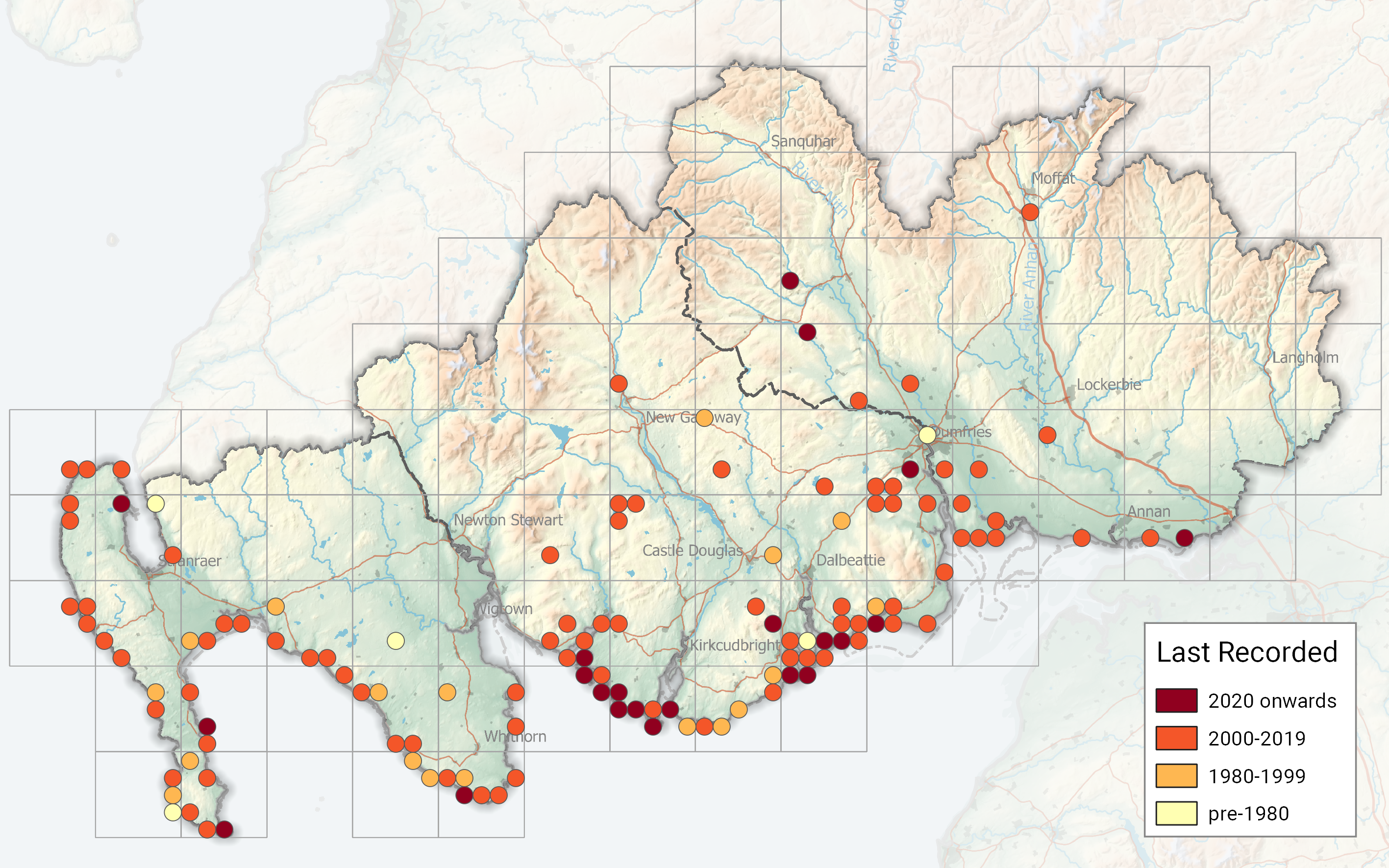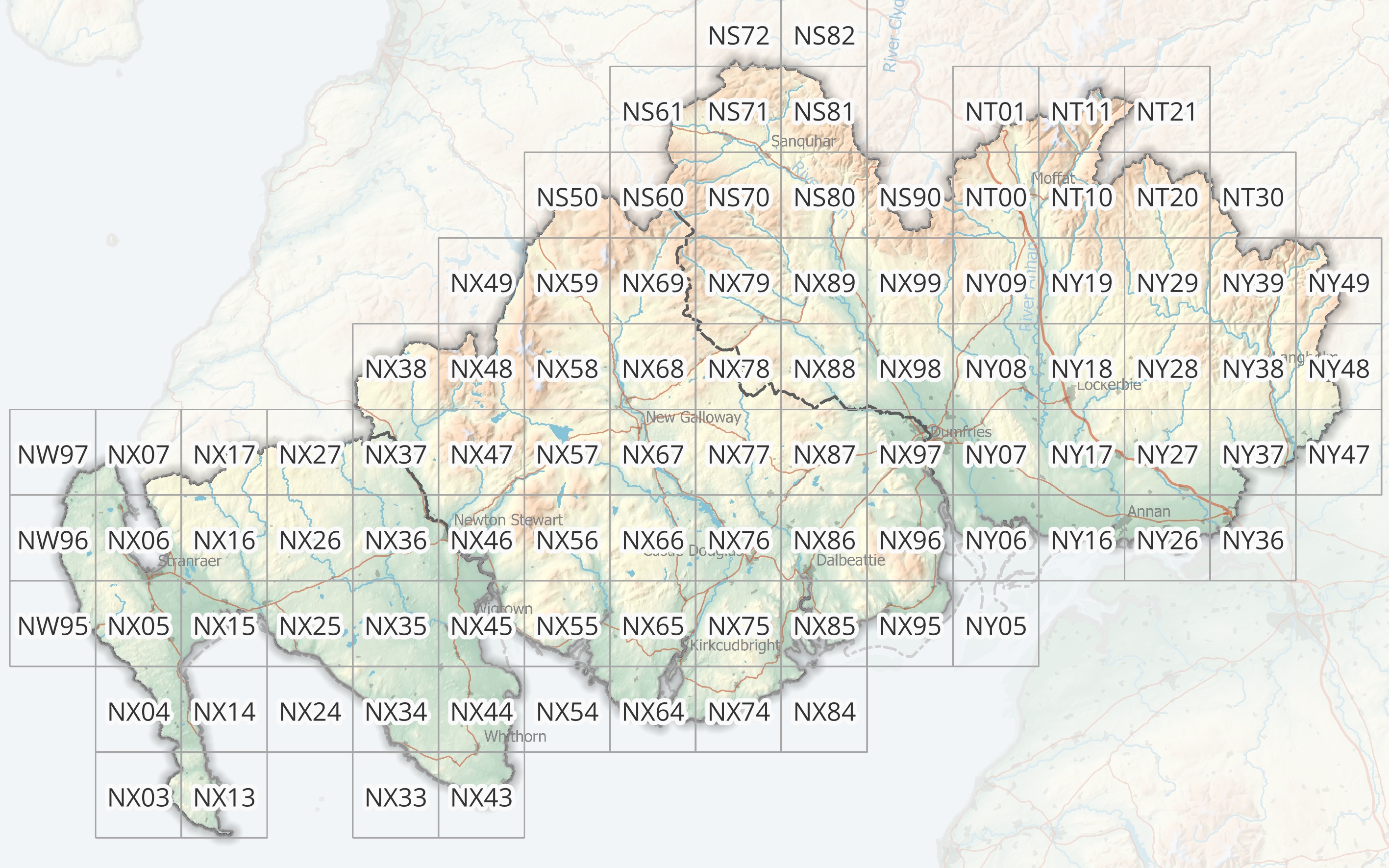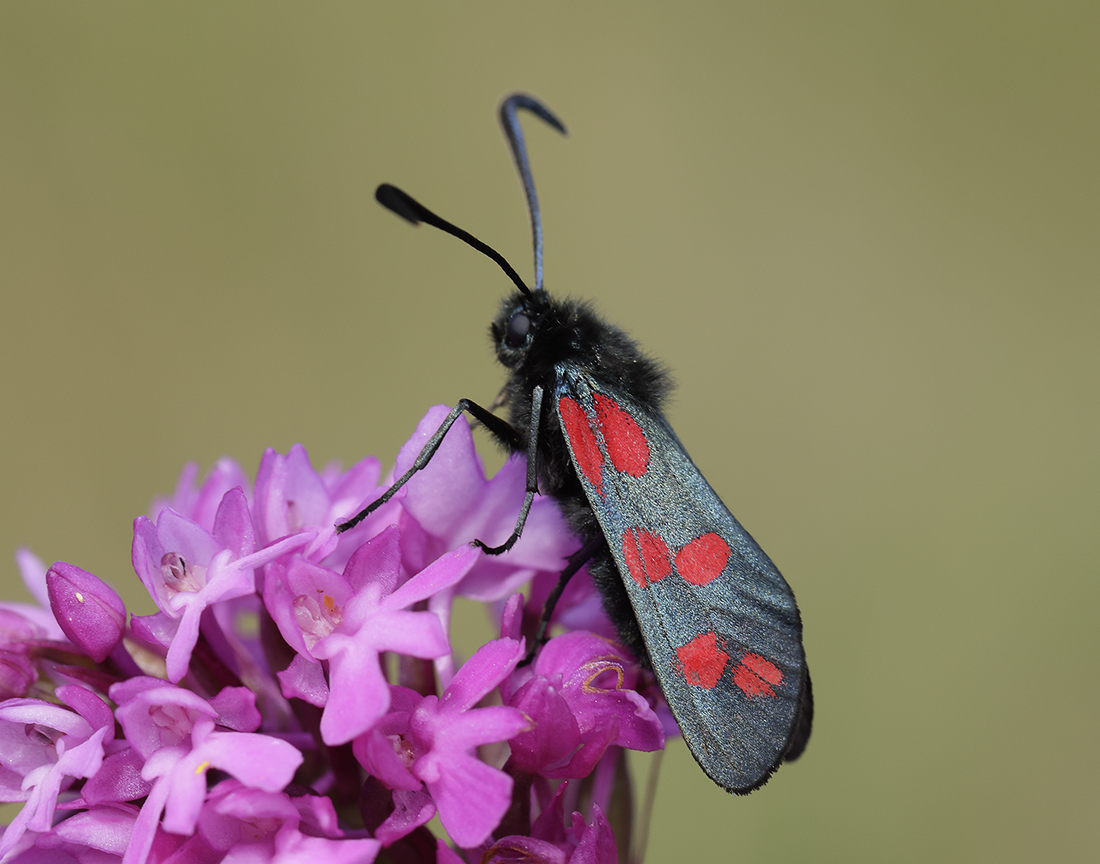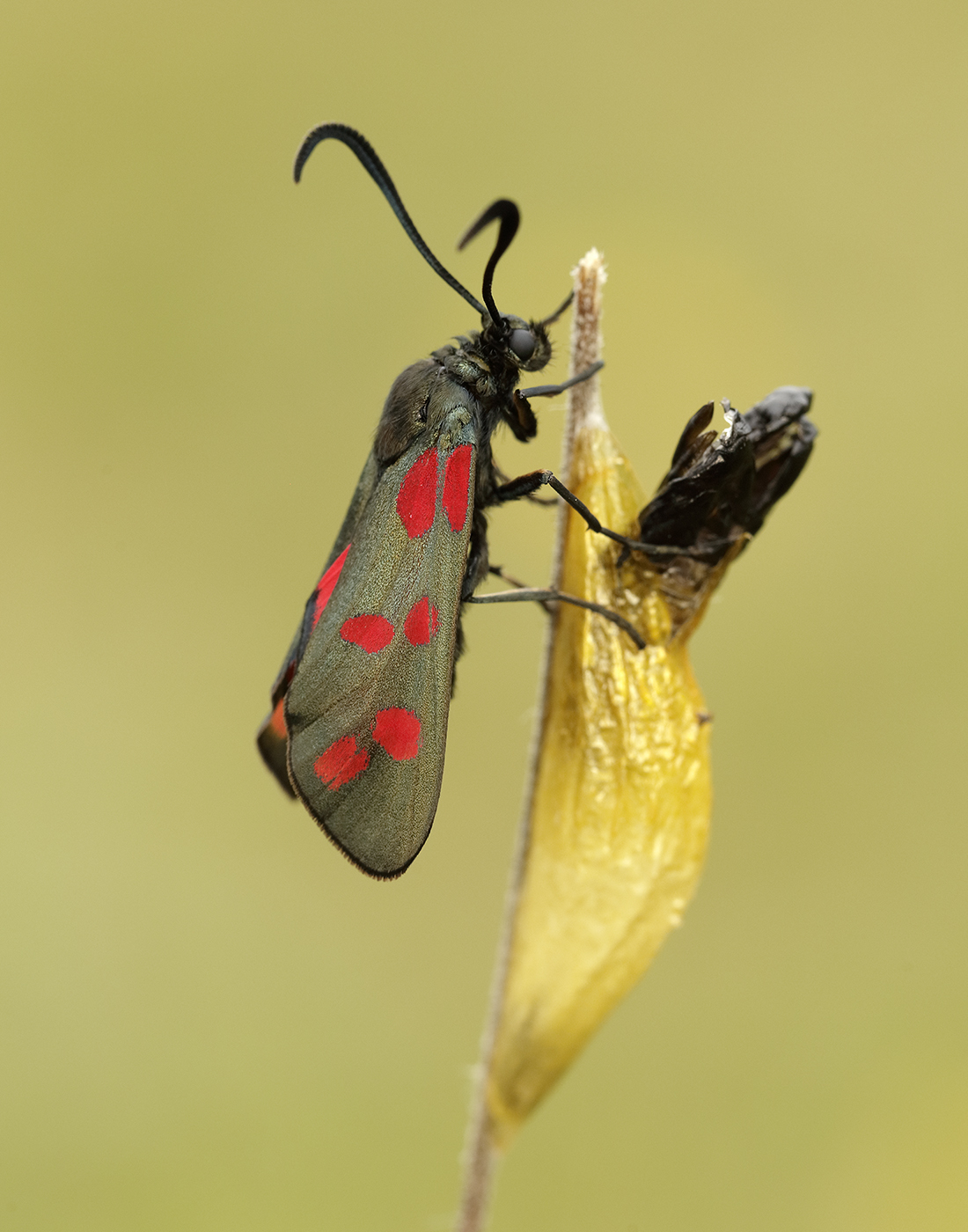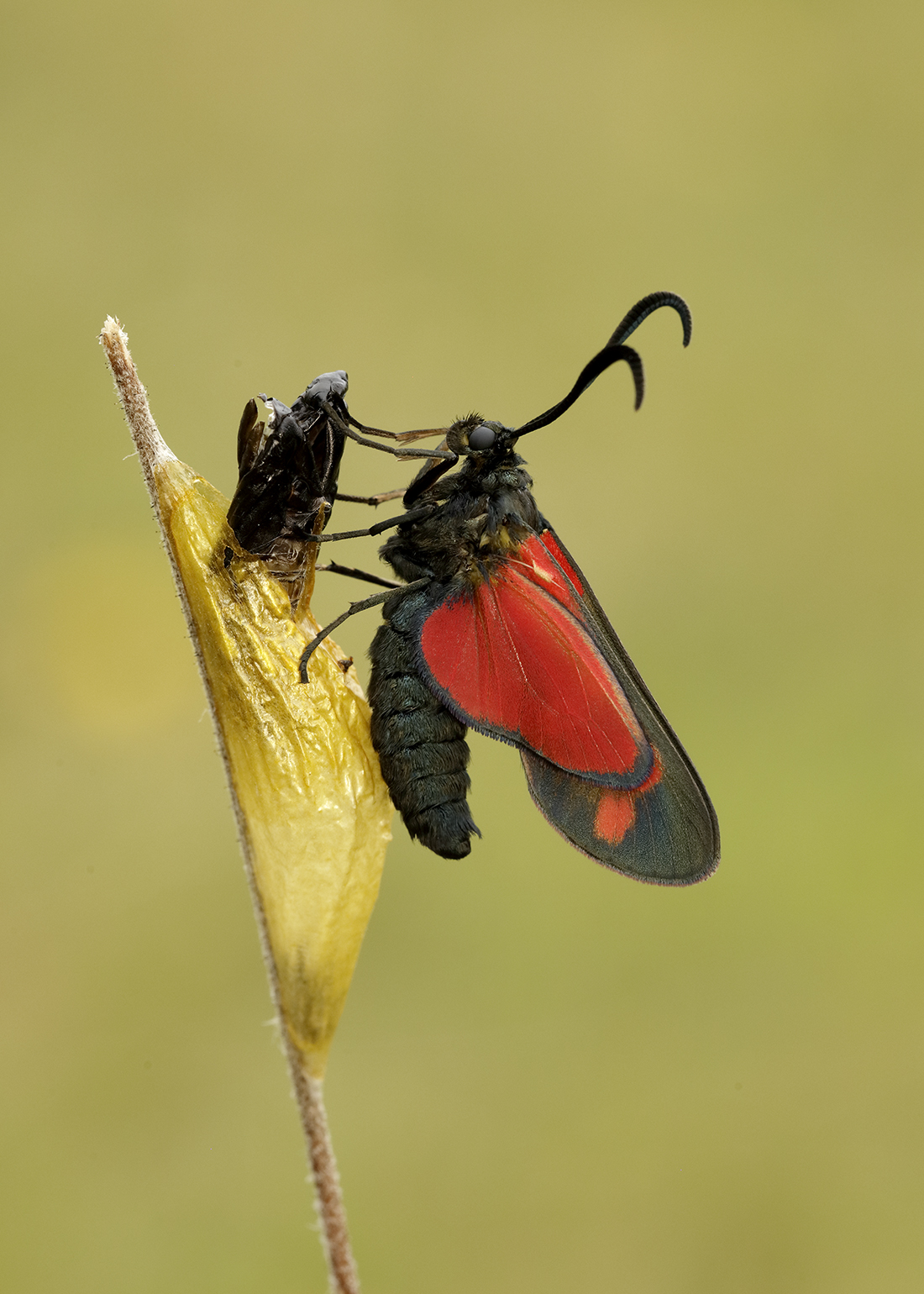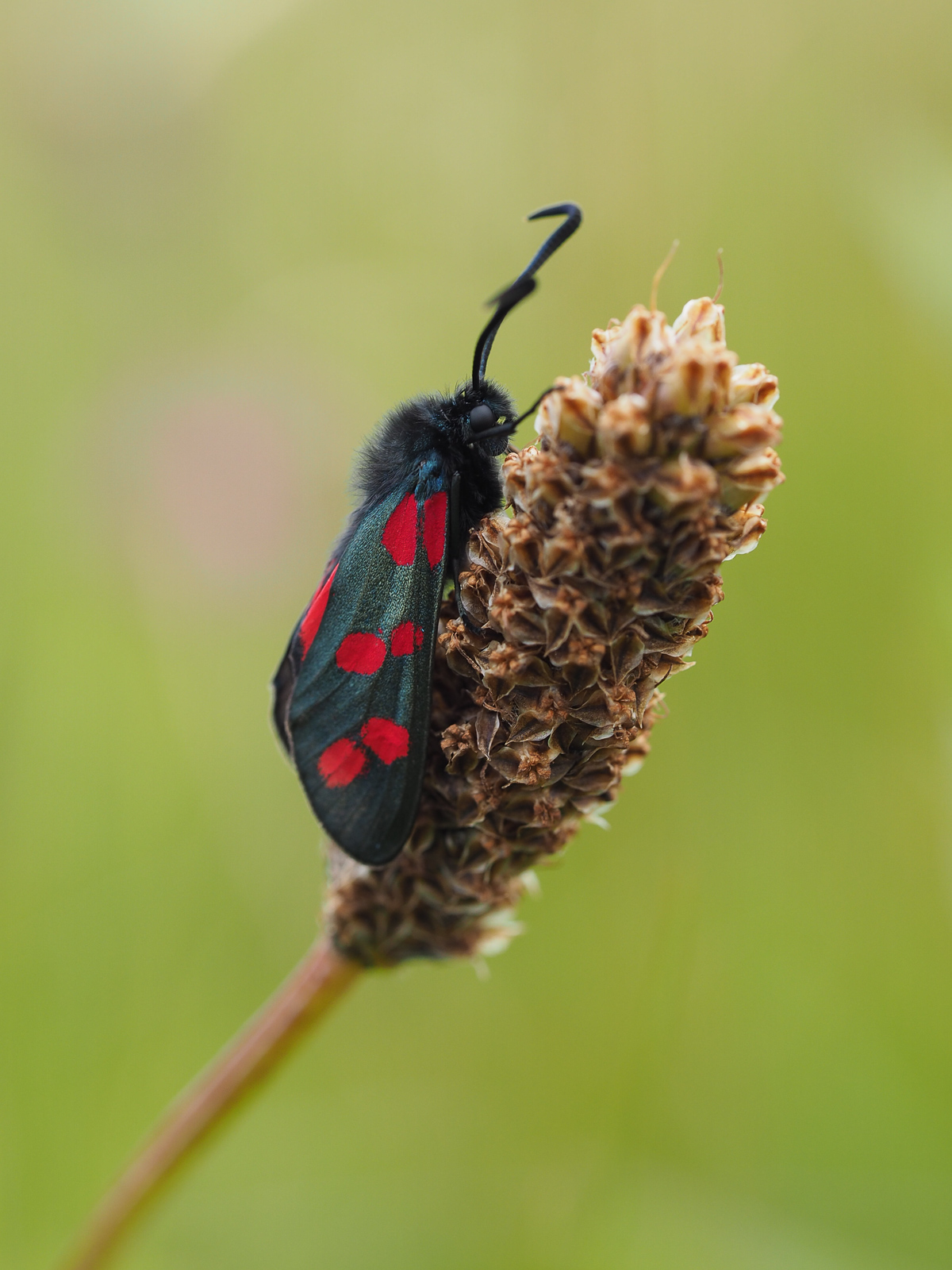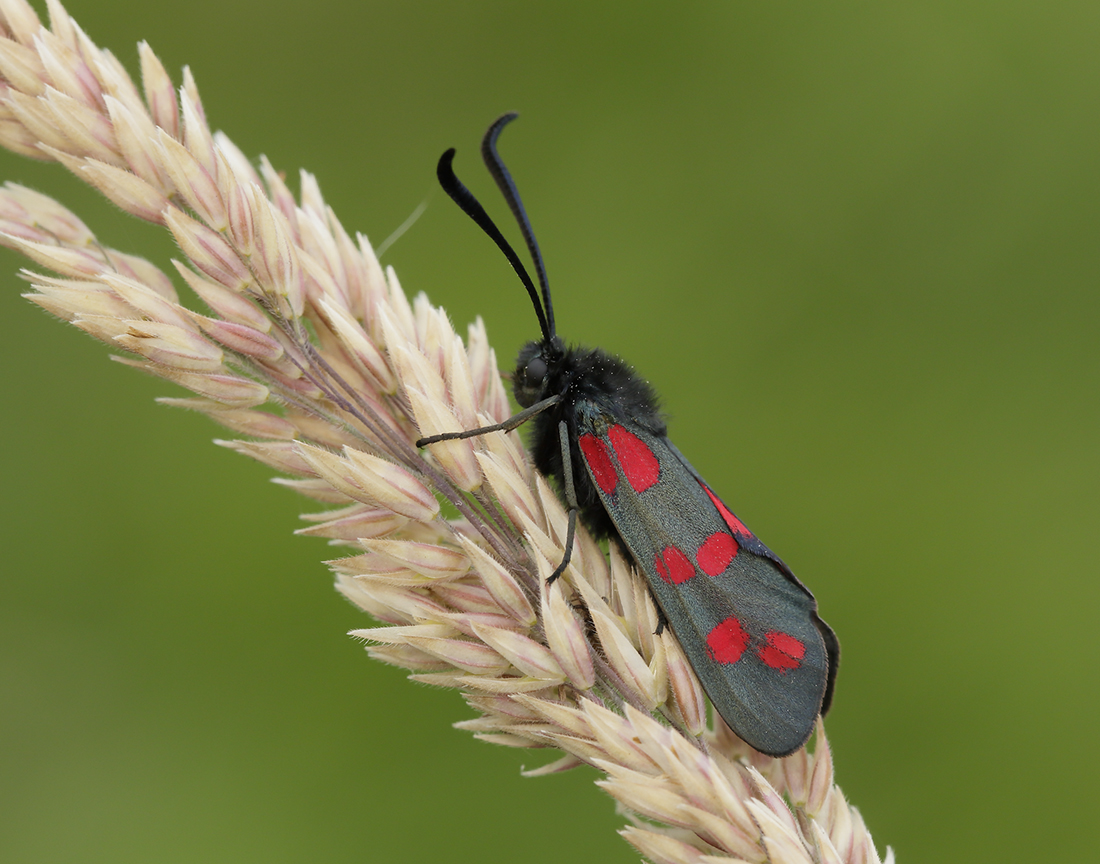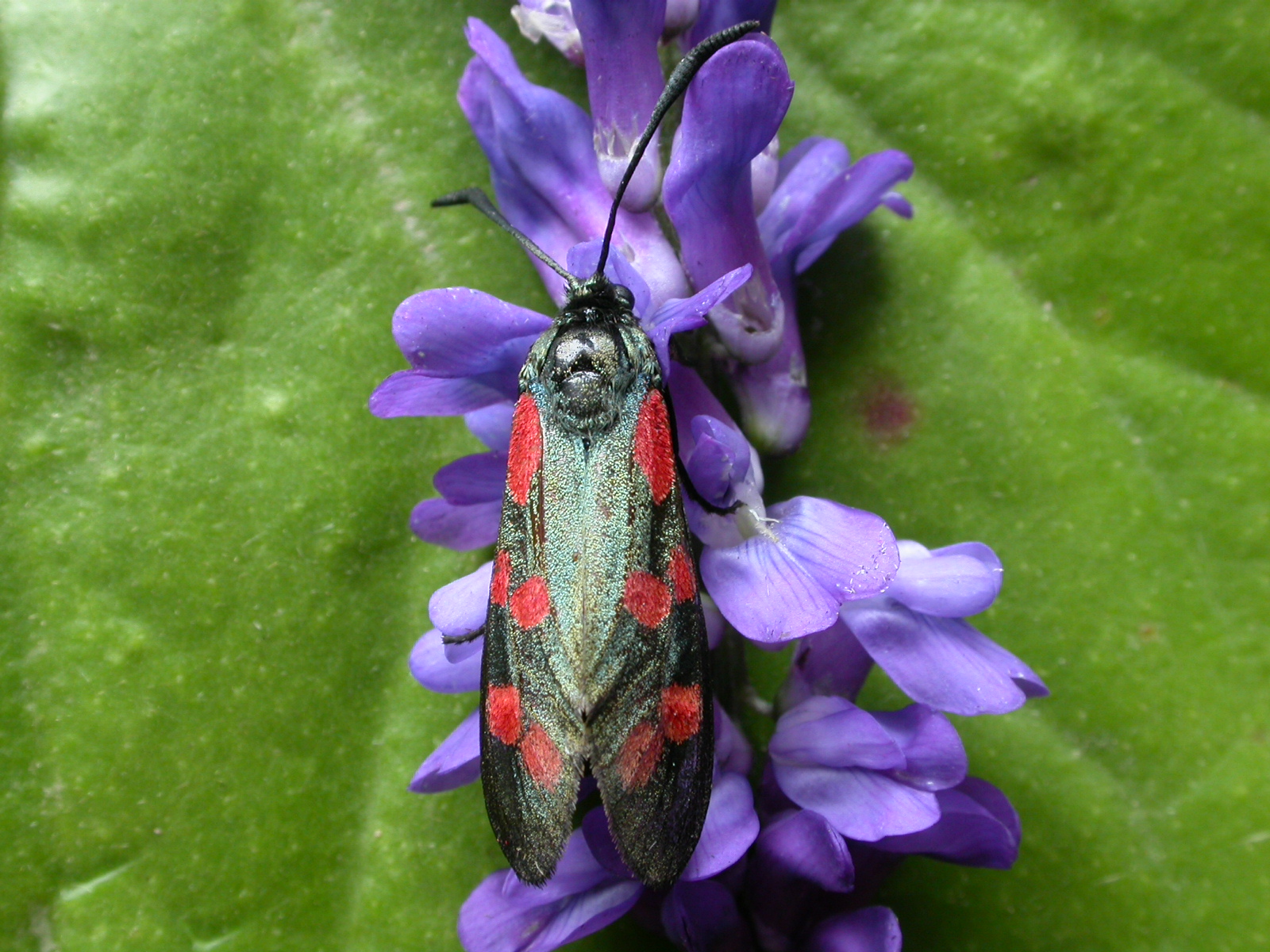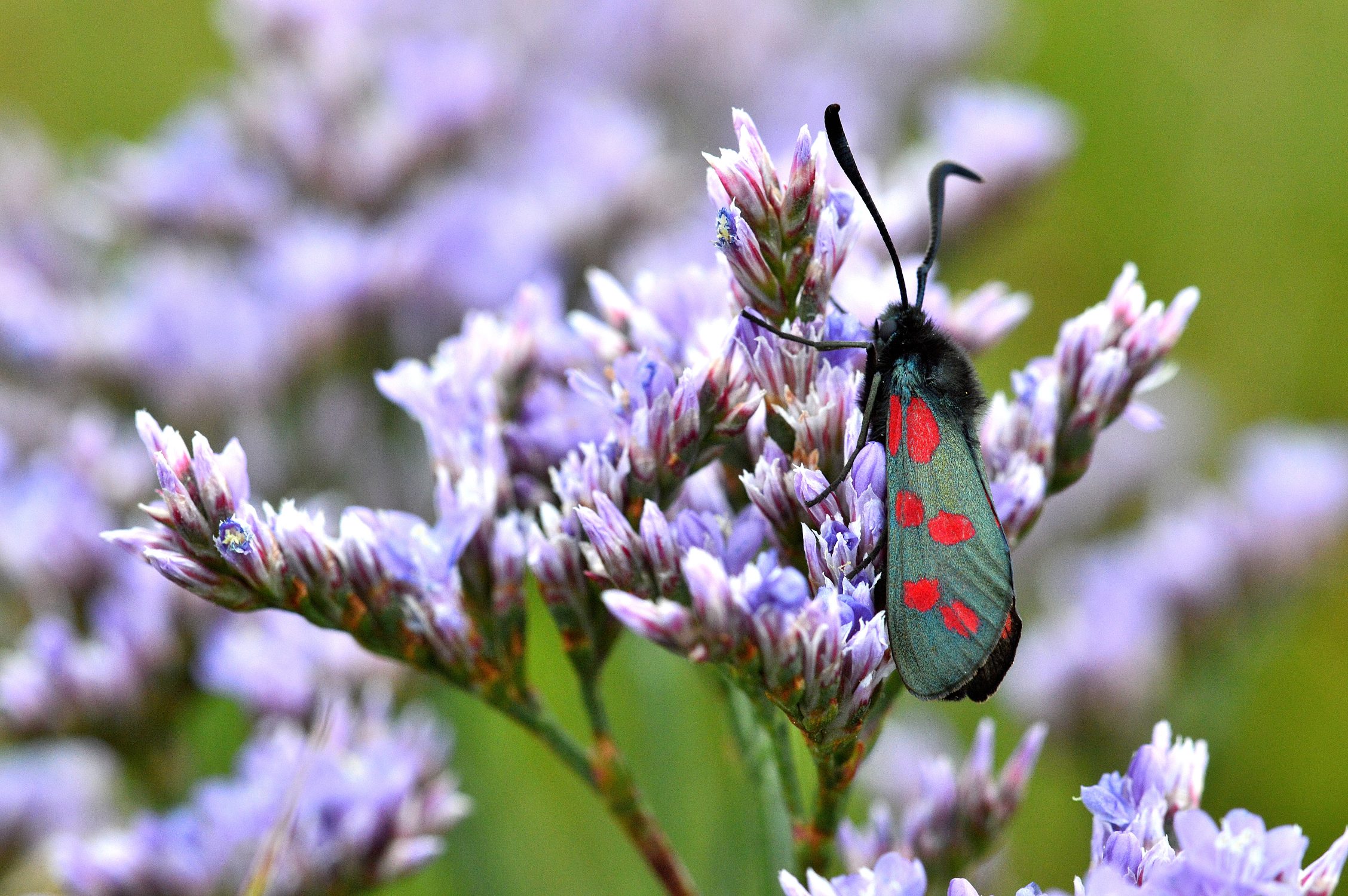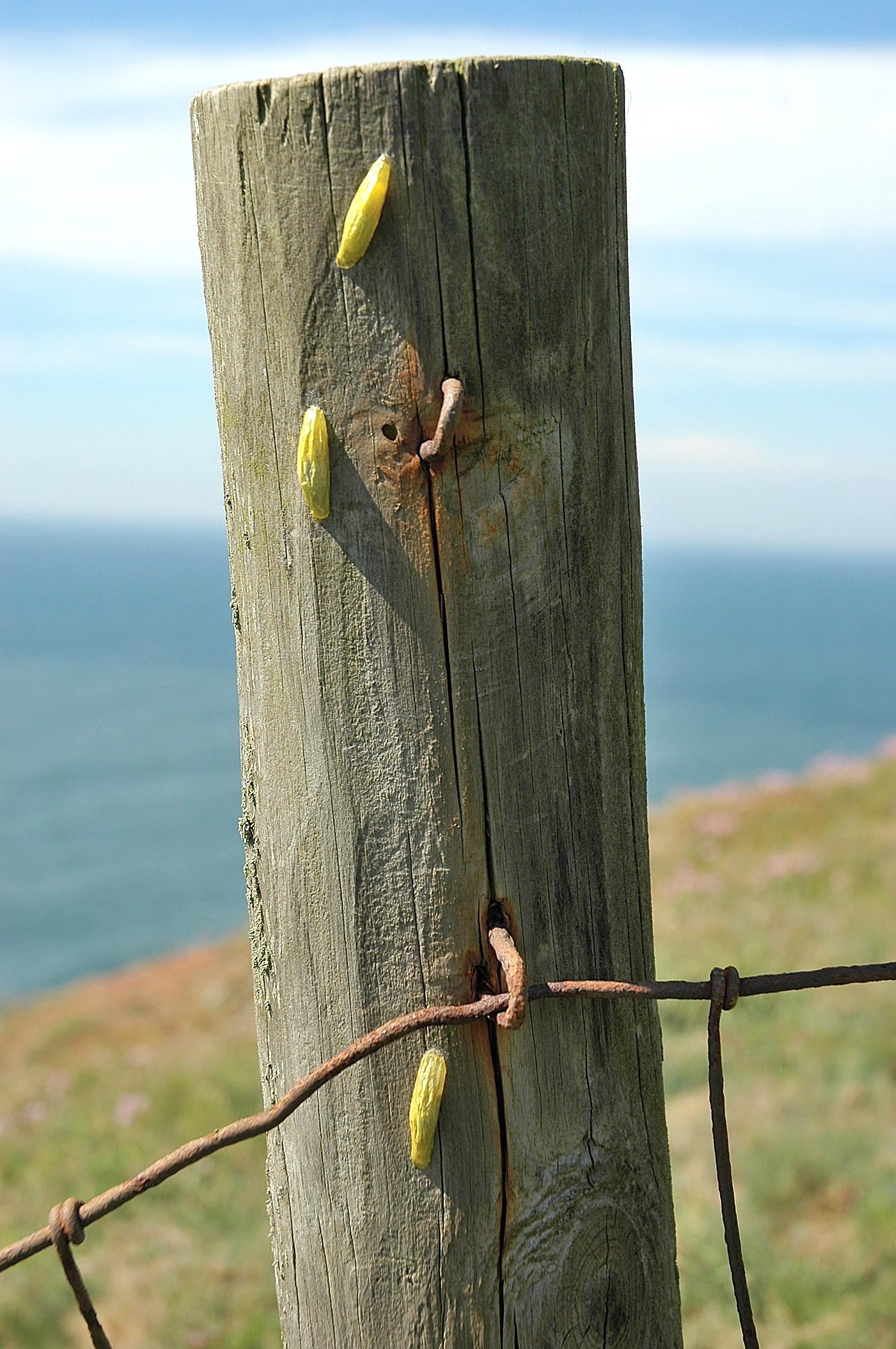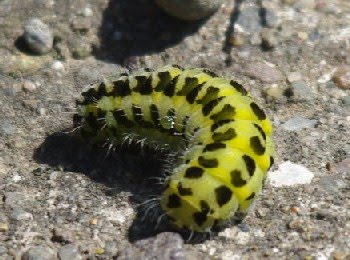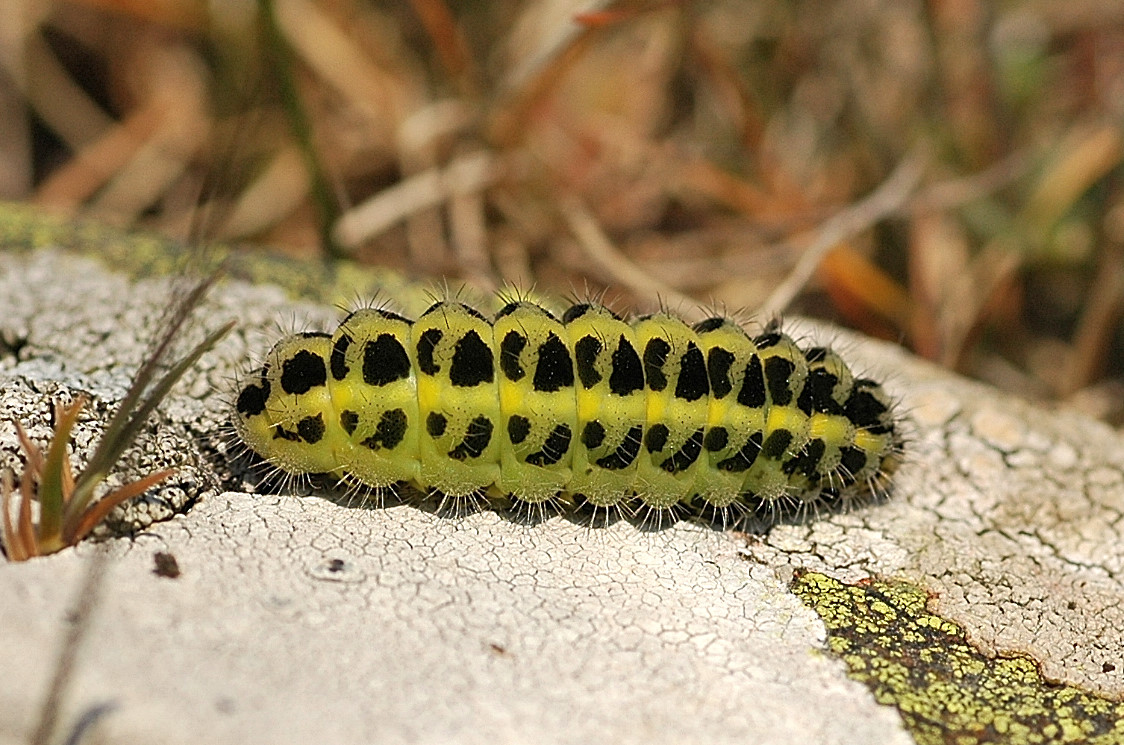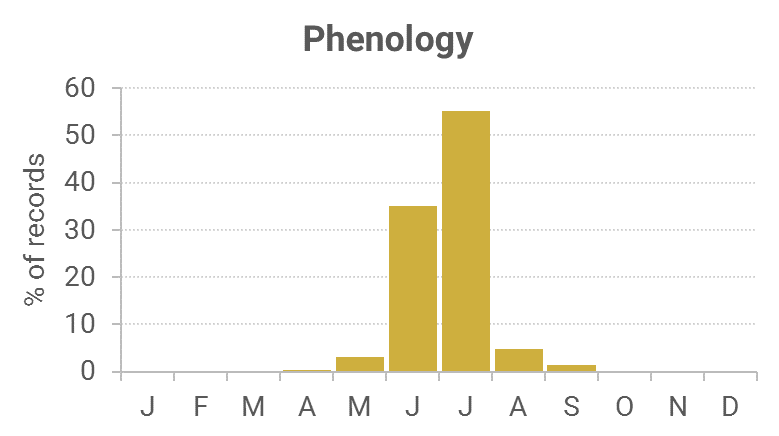Identification
Unmistakable, the only British burnet moth with six discrete red spots on the wing. The red and black markings serve as a warning to predators that the moth is toxic, releasing poisons such as hydrogen cyanide if attacked.
Recording Method.
A day-flying moth, flying particularly in sunshine. Spends much time feeding on flowers, even in cloudy weather.
Life cycle
One generation. Overwinters as a larva. Larva August to June, pupates in an exposed cocoon on a grass or plant stem.
Larval foodplants
Larvae feed on Bird’s-foot Trefoil, mainly Common, but sometimes also Greater.
Habitat
Flower rich grasslands, particularly coastal but also inland.
History
Lennon (1860) had stated that he had bred 30 on, presumably from larvae he had found around Dumfries where he walked everyday. By (1863) he had found it not common but had recorded it from Lochaber, a site where it was still found as recently as July 2006. W. Douglas Robinson (1870-71) had stated it was very local, but abundant where it occurs in June. Gordon (1913) stated it to be locally abundant at the coast, but scarce inland in Wigtownshire.
It was 1969 before it was recorded again and that was at the Mull of Galloway. There were two records in the 1970s, from Port William and Gretna, with four records during the 1980s.
From 1990 to 2010 there were two hundred records from widely scattered sites, but only a handful were from Dumfriesshire.

